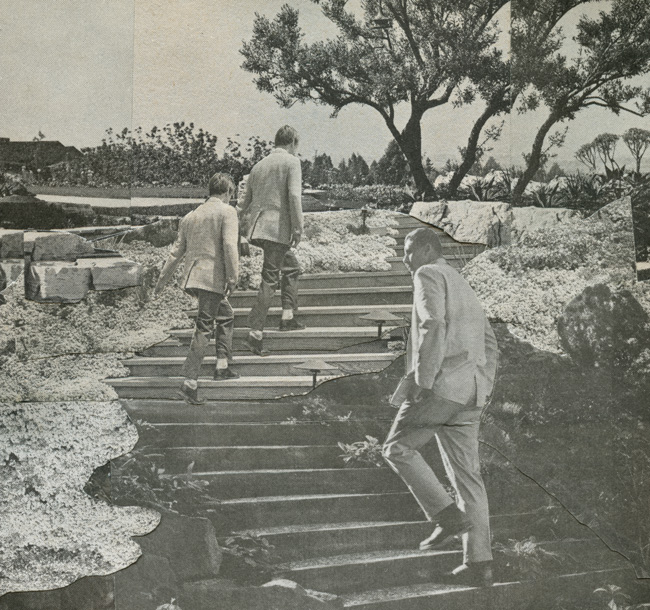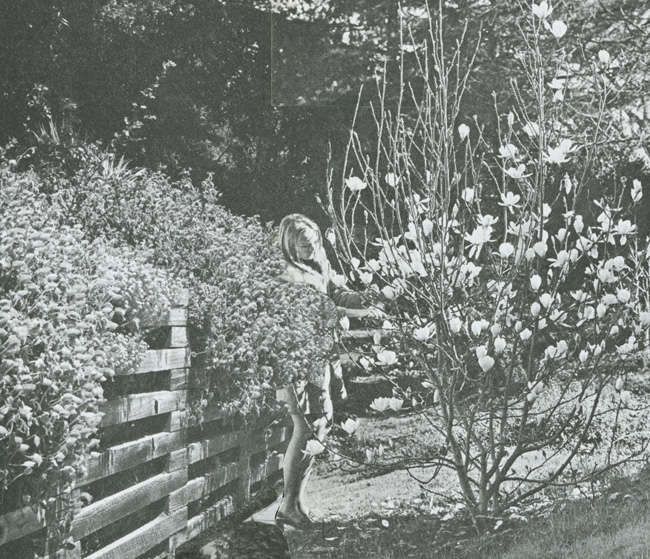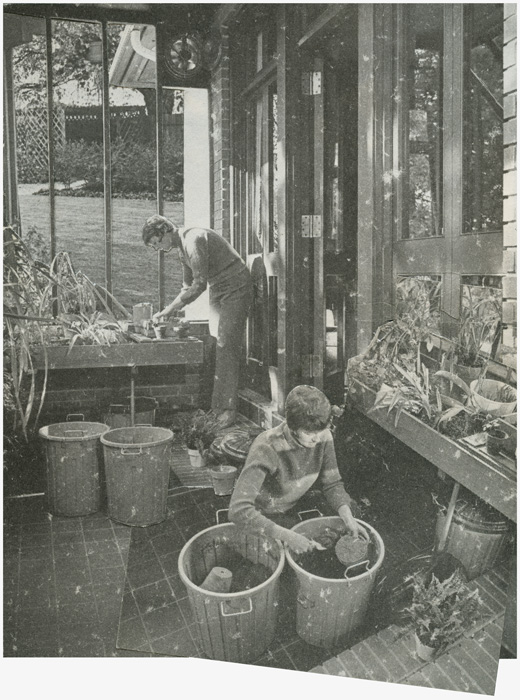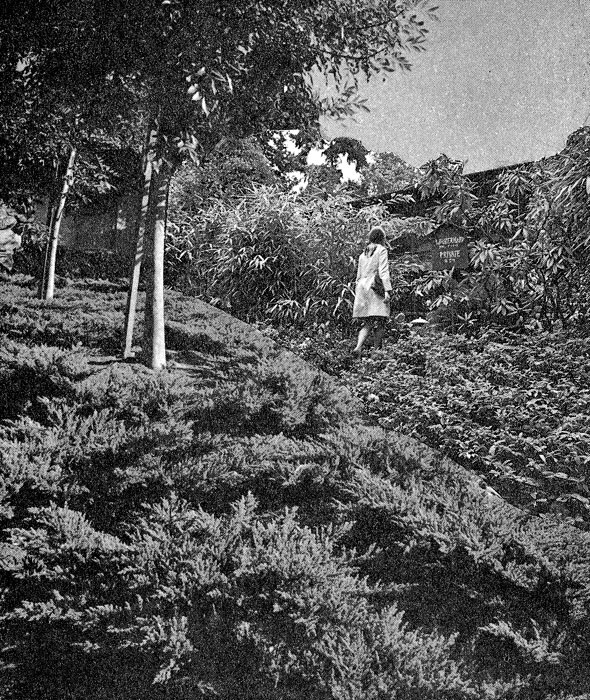The series Cutting Sunsets is composed of small-format collages portraying scenes of daily life around affluent dwellings on the American west coast. A few people, here and there, quietly tend to their land, do maintenance, contemplate, walk around, and converse. As the title of the series suggests, Allison Tweedie leafed through issues of Sunset Magazine from the 1960s and 1970s. The magazine was first published in the late nineteenth century to attract people to the American West by refuting “Wild West” stereotypes. Tweedie selected and cut out photographs from the sections of the magazine devoted to houses and landscaping to compose her black-and-white collages.
At first glance, it looks as though tranquillity reigns in these works, which appear to extend the magazine’s mission of idealizing the American lifestyle. Although the sun-saturated backyards bespeak leisure and relaxation, some dissonant elements nevertheless disturb the peace of these living spaces. Sometimes, cut-out sections of vegetation seem to subtly invade the environment. Presumed to be domesticated, cultivated, controlled, here the vegetation rebels, paradoxically bursting over fences, and there it imprisons the human figure in his own garden. Fragments of foliage are inserted into the geometric openings in the architecture, becoming pretexts for discontinuities in the collage. For instance, a window giving onto an interior curiously refers to a view of the exterior; the artist thus interchanges places by inverting the functions of the spaces of the human dwelling. The garden replaces the living room here, the ceiling becomes foliage there, and differences are blurred, as if the backyard were living under the house’s roof.
The collages in Cutting Sunsets also sometimes involve repetitions. These juxtapositions of a single image fragment lead the gaze back and forth to create comparisons between similarities from one element to another. A single fraction of thicket, a single tree branch, or a single person climbing the stairs – these snippets are repeated side by side in some of the collages. These doublings may refer to paramnesia, the sense of déjà vu, the mysterious sensation of remembering a brief moment already experienced and reliving it in the present. Other works in the series are formed of a single repetition, but flipped – the inversion of the image once again leading the gaze back and forth. These inverted com- positions confuse perception, and they are examples of the poetic cohabitation of familiarity and strangeness at work in all of the collages in the series.
The piece called Dust offers an inversion of a picture of well-cropped lawn. However, this work is not simply an inverted repetition; it is formed of two images of a single place, with a different sprinkler at the centre of each. What arises often in the details of the works in Cutting Sunsets stands out in this one: the familiarity of the Western house upended by the strangeness of Tweedie’s diversions. Drawing on popular magazine imagery and exploiting the retro fad, these compositions, made up of repetitions, inversions, and reversals, divert our perception and may invoke an oneiric impression of the already-seen – or the already-dreamed.
Translated by Käthe Roth.
[See the printed or digital version of the magazine for the complete article.]
Allison Tweedie is an artist living and working in Vancouver, BC. Her work was included in the group exhibition When Someone Strange is Calling You Home at Artspeak Artist Run Centre (2013), Cut and Paste at Equinox Gallery (2012), and Reoccurrence: Serial Motifs at Helen Pitt Gallery (2010). In 2014, she had a solo exhibition, Cutting Sunsets, at Equinox Gallery in Vancouver. In addition to her art practice, she is studying for a master’s degree in landscape architecture at the University of British Columbia.
After earning a college diploma in photography and a bachelor’s degree in art history, Gentiane La France continued her reflections about photography with a master’s degree in art studies at UQAM. Her research focuses on memory and identity in contemporary photography. La France lives in Quebec City, where she regularly contributes to the radio program L’Aérospatial on CKRL 89.1 as a visual arts columnist. She also contributes to the VU PHOTO blog Pratiques photographiques and to Ciel variable.









